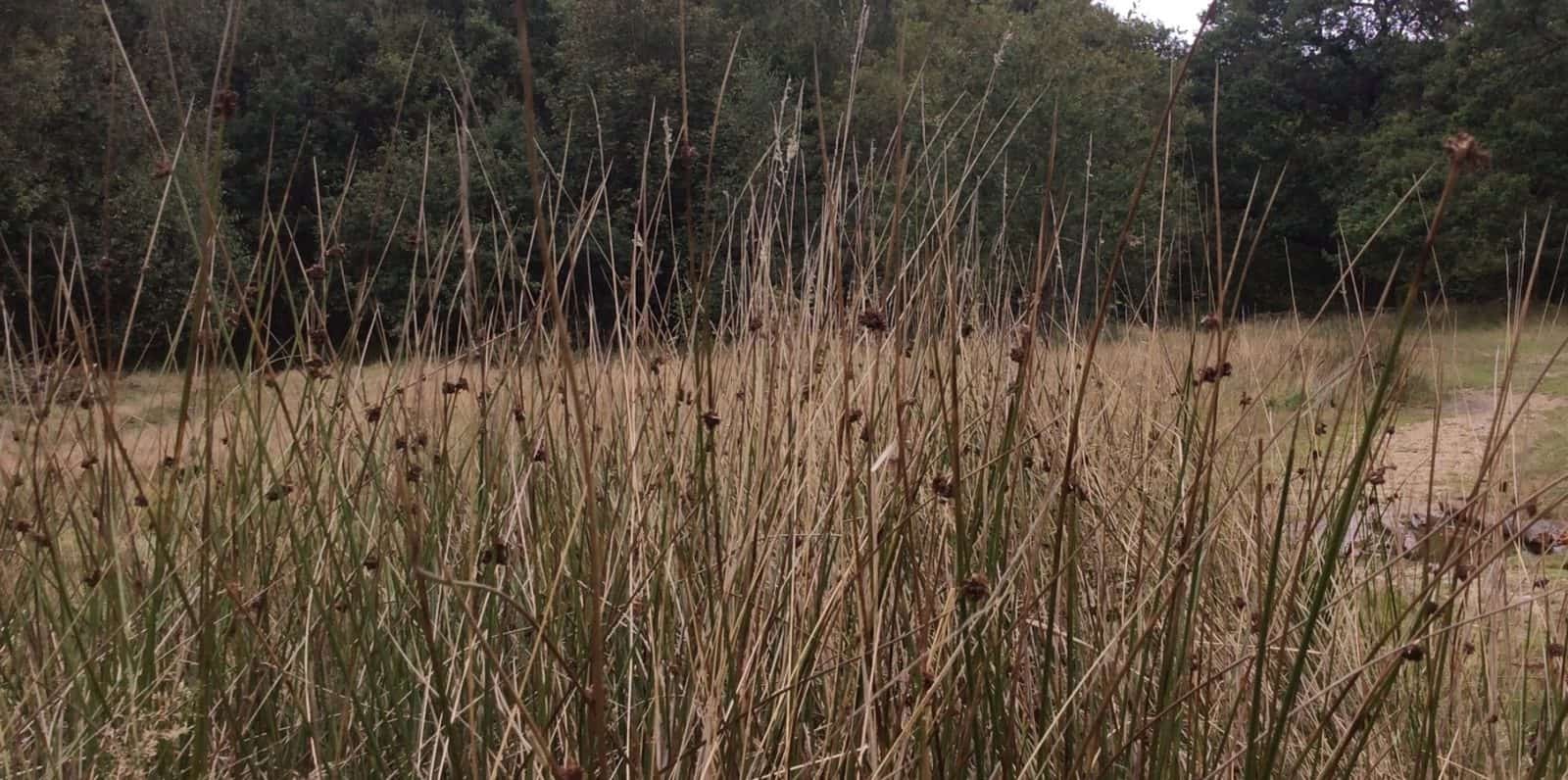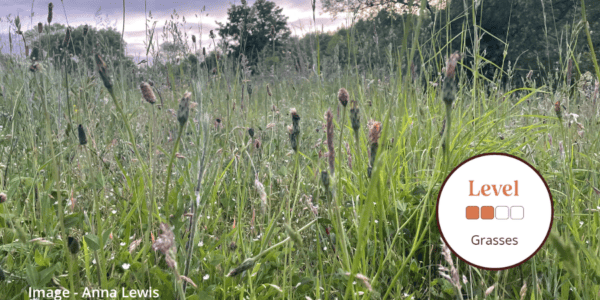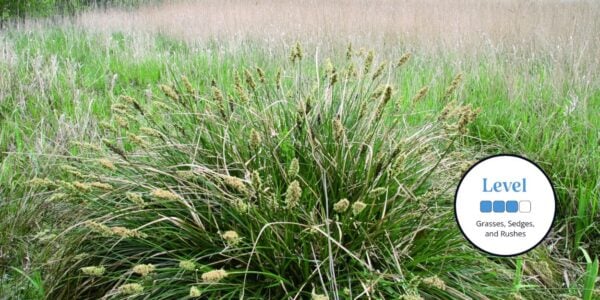This course is now fully booked.
Sign up for our newsletter to hear about the next run of this course
Find similar courses here
Grasses, the Poaceae family form the matrix of a wide range of habitats but are also of huge economic importance. There are about 10,000 species of grasses found throughout the world with around 200 found in the UK, learn how to identify some of the most common
It is not really possible to explore and survey any habitat without including the grasses, even though they are often overlooked.
This intermediate course will allow you to identify a variety of common grass species. Ecological consultants, staff and volunteers carrying out botanical surveys will all need to have the ability to identify at least the most common grasses if their job is to be done properly. In this course, you will look at the structure of a grass and its different parts and how this can be used to make a positive identification.
Your course takes place on a 12-hectare estate, surrounded by a rich range of habitats, including the River Severn and semi-ancient woodland, set in the heart of Shropshire with views disappearing into Wales.
PLEASE NOTE the course fee is for tuition only. There is no accommodation provided with this course. If you would like to book accommodation, lunch and an evening meal at Preston Montford, please email [email protected]
*Bookings will close if course capacity is reached
If you’re ready to start identifying common grass species, then this is the course for you!
Who Should Attend?
Nature enthusiasts, Students, Rangers, Early career consultants and ecologists.
Knowledge Level
Intermediate. Level descriptors can be found on the following webpage: Framework and Course Level Descriptors
Prior Knowledge
It would be an advantage for learners to have at least some knowledge of grass structure and grass species identification.
What will be covered during this course?
-
- The importance of grasses
- Grass structure and the differences between grasses, sedges and rushes
- Identifying grasses using both vegetative and floristic features and a dichotomous key
- Abiotic factors and grass growth
By the end of the course, you will be able to:
-
- Explain why grasses are important to many species and the threats they face
- Identify the different parts of a grass: flower structure and vegetative features plus distinguish between a grass, a rush and a sedge
- Identify a range of common grasses using both vegetative and floristic characters
- Use dichotomous keys to identify a specific grass
- Use habitat as a clue to the identity of a grass
- Share this knowledge with friends, family, and fellow volunteers
The course gives you the opportunity to immerse yourself in a new subject and acquire novel skills. Our fantastic tutor will combine the use of classroom-led learning and outside learning opportunities to give individuals the skills and confidence to learn more about grasses
-
- See the ‘Example Timetable’ and ‘What’s Included’ sections below for more information about this course
- Upon booking, you will need to provide individual details of all attendees
- Please email [email protected] if you have any questions
Group Bookings Made Easy
If you have a group of 10 or more individuals wanting to complete one of our courses, our team are available to discuss your options – from discounts to private team courses.
-
- Discounted rates
- Privately run courses for your group
- Bespoke courses developed specifically for your needs
Email [email protected] to discuss your options!
If we are unable reach viable numbers for this course, we will inform you of the course cancellation 14 days prior to the course run. We would recommend when purchasing accommodation and/or travel you should take out your own insurance.
Tutor: Fiona Gomersall
Fiona Gomersall is a trained biology teacher and skilled field botanist. She is Conservation Officer at Shropshire Wildlife Trust and is an active member of the Shropshire Botanical Society. Fiona’s monitoring and botanical survey work takes her all over the county to the 40 nature reserves and several hundred local wildlife sites.Book with Confidence
We understand the difficulties of making plans in the current situation when guidelines continue to change, and insurance conditions are being tightened. In response, we will continue to offer additional flexibility. Find out more here
Example Timetable
Example Timetable
This timetable is subject to change but should give a clear outline of what to expect
- Please arrive in time for the course to start promptly at 10:00 am
- The course will end at 5:00 pm.
| 10:00am | Tutor introduction and classroom session covering:
|
| 11:15am | Break and prepare for field trip– refreshments not provided |
| 11:30am | Guided walk around centre to apply classroom knowledge |
| 1:00pm | Lunch – not provided |
| 2:00pm | Continued field time |
| 4:30pm | Return to classroom, summary and final questions |
| 5:00pm | End of course |
Please note - accommodation, refreshments and an evening meal are not included
Learners do not need to be particularly fit to do this course. We will not be walking far, just around the grounds of the Field Study Centre. In places there are slopes but not these are not too steep.
What's Included
The course has been carefully created by expert tutors and educators to help you build your knowledge and apply it within the field surrounded by like-minded individuals.
The course includes:
- Classroom learning covering the theory of the species
- Field excursions to apply new knowledge
- Expert tuition for which the FSC is renowned
You can rest assured that the absolute best content from an expert in environmental education will be provided. In choosing an FSC course, you will be joining thousands of people who learn with us each year.
Before You Attend
What to Bring:
- Notebook and pencil
- Lunch and refreshments
- Sensible footwear and clothing for being outdoors
- Small bag to carry personal items
If you have them:
- Hand lens
- Your own reference book(s) - If you have access to the ‘Grasses: a guide to identification using vegetative characters’, Hilary Wallace, (FSC AIDGAP) ‘Grasses’, CE Hubbard and/or the BSBI handbook, ‘Grasses of the British Isles’
There will be a member of staff with first aid training and access to a first aid kit on site. If you have special medical or access requirements, please let us know as soon as possible so we can plan the course.
Sorry this course has ended





